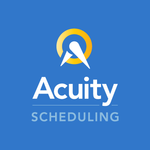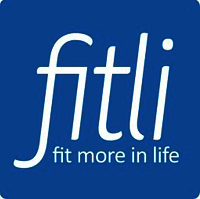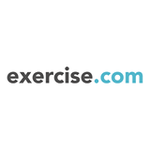Top Personal Training Softwares Softwares
Personal Training software is designed to streamline and enhance the daily operations of fitness professionals. This category of software provides tools for managing client schedules, tracking individual progress, and creating customized workout plans. It often includes features like billing, appointment booking, and communication platforms to facilitate interactions between trainers and clients. ... Read More
44 companies found
Product Description
MINDBODY is a software platform designed to help small and medium-sized businesses in the wellness and fitness industries manage their daily operations. It serves a diverse range of businesses, including yoga studios, gyms, salons, spas, and more, providing them with tools to streamline their processes and enhance customer experiences. The software offers a variety of features tailored to the nee... Read More
Users
- • No Data
Industries
- • No Data
Market Segment
- • No Data
Product Description
Punchpass is a straightforward and user-friendly software designed to help businesses manage their class schedules and memberships. It's particularly useful for small to medium-sized fitness studios, dance schools, and similar organizations. If you're looking for a hassle-free way to track your class bookings, customer attendance, and payments, Punchpass could be a good fit for you. The system al... Read More
Users
- • No Data
Industries
- • No Data
Market Segment
- • No Data
Acuity Scheduling
Product Description
Acuity Scheduling is all about making appointment booking easy and stress-free. Designed for businesses of all sizes, it offers a user-friendly platform where clients can book appointments online anytime. This ensures convenience for both the business and the client. No more endless phone calls, back-and-forth emails, or double bookings. Acuity allows clients to see available times, book slots, an... Read More
Users
- • No Data
Industries
- • No Data
Market Segment
- • No Data
Product Description
Vagaro helps small and medium-sized businesses in the beauty, fitness, and wellness industries by offering comprehensive software that simplifies daily operations. Whether you run a hair salon, a barbershop, a spa, a personal training business, or a yoga studio, Vagaro provides the tools you need to manage your business more effectively. The user-friendly platform covers a wide range of functions... Read More
Users
- • No Data
Industries
- • No Data
Market Segment
- • No Data
Product Description
Virtuagym is a comprehensive health and fitness software designed to help gyms, personal trainers, and fitness enthusiasts streamline their operations and enhance their workout experiences. This user-friendly platform offers a range of tools to manage various aspects of the fitness business, from client scheduling and membership management to staff coordination and financial tracking. One of the ... Read More
Users
- • No Data
Industries
- • No Data
Market Segment
- • No Data
PocketSuite
Product Description
PocketSuite is a straightforward, easy-to-use software designed to make managing small service businesses a breeze. Whether you’re a personal trainer, therapist, dog walker, or any other type of service provider, PocketSuite brings all your business tools into one convenient place. It’s like having an assistant in your pocket. One of the standout features of PocketSuite is its client management s... Read More
Users
- • No Data
Industries
- • No Data
Market Segment
- • No Data
Product Description
Fitli is a software designed for fitness businesses to help manage day-to-day operations smoothly and efficiently. It’s tailored for anyone running a gym, studio, or personal training business, whether it's yoga, pilates, dance, or martial arts. Fitli aims to save time and reduce stress by providing straightforward tools for scheduling, client management, and payment processing. With Fitli, sched... Read More
Users
- • No Data
Industries
- • No Data
Market Segment
- • No Data
Exercise.com
Product Description
Exercise.com is dedicated to helping fitness businesses run smoothly and efficiently. Our platform provides an all-in-one solution designed specifically for gyms, personal trainers, and fitness professionals. At its core, Exercise.com offers a variety of features that can save time and reduce the need for multiple software services. Our software allows you to manage your entire business under one... Read More
Users
- • No Data
Industries
- • No Data
Market Segment
- • No Data
Product Description
Omnify is an all-in-one solution designed to help businesses and organizations manage their operations more smoothly. Whether you run a fitness center, a swim school, or any other service-based business, Omnify can streamline everything from class schedules to customer bookings. At its core, Omnify aims to make daily operations easier. With an intuitive interface, it helps manage appointments, me... Read More
Users
- • No Data
Industries
- • No Data
Market Segment
- • No Data
Trainingym
Product Description
Trainingym is a user-friendly software designed to help fitness centers, gyms, and personal trainers smoothly manage their operations. If you’re running a fitness facility, it’s vital to ensure members are satisfied, your staff is on track, and the business is operating efficiently. That’s where Trainingym comes in. It provides an all-in-one platform to handle booking, class schedules, and member... Read More
Users
- • No Data
Industries
- • No Data
Market Segment
- • No Data
What features should I look for in personal training software?
When selecting Personal Training software, there are several key features to consider to ensure it meets your needs effectively. These features help streamline the management of client training sessions, scheduling, client progress tracking, and more.
Client Management
A robust Personal Training software should have comprehensive client management capabilities. This includes storing client information, medical history, and fitness goals. It should offer easy access to past and present workout plans and progress notes.
Scheduling and Calendar
An integrated scheduling system is essential. Look for features that allow you to manage appointments, group classes, and cancellations effortlessly. Automated reminders and calendar syncing can greatly increase efficiency and client satisfaction.
Workout and Nutrition Planning
Tailored workout plans and nutrition guidance are critical components of Personal Training software. The software should allow for the design of customized workout routines and dietary plans. These plans need to be adjustable based on client progress and feedback.
Progress Tracking
The ability to track client progress is fundamental. Personal Training software should offer tools to monitor workouts, improvements in strength, weight loss, or other targeted metrics. Visual data representations like charts or graphs can provide clear insights into progress.
Communication Tools
Effective communication features are vital to keep in touch with clients. Messaging tools, whether through email or mobile notifications, keep trainers connected with their clients to send updates, motivation, or important reminders.
Payment Processing
Integrated payment solutions facilitate smooth financial transactions. Look for software that allows for secure and easy management of client payments, including options for recurring billing and invoicing.
Mobile Compatibility
The ability for both trainers and clients to access Personal Training software on mobile devices is crucial. Mobile applications or responsive websites enhance flexibility, allowing both parties to access schedules, workout plans, and progress tracking on-the-go.
Integration with Wearable Devices
Integration with wearable technology can provide real-time data to aid in creating accurate fitness assessments. This functionality supports a data-driven approach to personal training, leveraging metrics such as heart rate and activity levels.
Reporting and Analytics
Powerful reporting and analytics features assist in assessing your business performance. Detailed reports on attendance, client progress, and financials aid in making informed decisions and strategic planning.
Customization and Branding
Customization features allow you to tailor the software to fit your brand identity. This includes personalized client portals and reports featuring your logo and branding elements, enhancing your professional image.
Data Security
Ensuring client data privacy and security is paramount. The software should comply with relevant regulations and offer features such as data encryption and secure access controls.
User-Friendly Interface
The usability of Personal Training software is important for efficient management. An intuitive interface ensures that both trainers and clients can navigate the system effortlessly, minimizing the learning curve and enhancing the user experience.
How does personal training software help manage client schedules?
Personal Training software is a crucial tool for fitness professionals to effectively manage client schedules. It streamlines various scheduling aspects, ensuring both trainers and clients stay organized. Here’s how Personal Training software assists in managing client schedules:
Centralized Scheduling
Personal Training software offers a centralized platform for trainers to keep track of all client appointments and training sessions. This reduces confusion and minimizes double-bookings, providing a clear overview of daily, weekly, or monthly schedules. Through a single interface, trainers can view, edit, or update scheduling details, ensuring an efficient management process.
Automated Reminders
One key feature of Personal Training software is automated reminders. This functionality benefits both trainers and clients by sending reminders via email or SMS. These reminders ensure clients attend sessions punctually and reduce the incidence of missed appointments. Automated reminders also help trainers by reducing time spent on administrative tasks and allowing them to focus more on training activities.
Client Self-Scheduling
Many Personal Training software solutions enable client self-scheduling. This feature allows clients to log into the system to choose session times that best fit their personal schedules, increasing flexibility and convenience. It empowers clients to manage their own appointments, reducing the need for trainers to manually enter or adjust schedules.
Real-time Updates
Real-time updates are an essential component of Personal Training software. These updates ensure any changes to the schedule, like cancellations or rescheduling, are immediately reflected in the system. This feature allows trainers and clients to stay informed about the latest scheduling adjustments, preventing miscommunications and ensuring smooth operation.
Calendar Integration
Personal Training software often integrates with popular calendar applications, like Google Calendar or Outlook. This integration enables seamless synchronization of training schedules with personal calendars. This feature helps clients and trainers to avoid conflicts with other scheduled activities and maintain a well-organized personal routine.
Customizable Scheduling Options
Flexibility in scheduling is paramount, and Personal Training software typically offers customizable options. Trainers can set specific availability, categorize sessions (such as one-on-one or group sessions), and define durations. Customizable schedules accommodate different training types and client preferences, ensuring that the scheduling process supports both unique needs and business goals.
Mobile Access
Mobile access to Personal Training software enhances scheduling efficiency. Trainers and clients can manage schedules on-the-go through mobile applications, allowing for quick adjustments and reducing the need for direct and immediate access to a desktop computer. Mobile functionality facilitates easy communication and schedule management from virtually anywhere.
Availability Insights
Personal Training software often provides insights into client scheduling histories and preferences. Trainers can identify peak times and high-demand sessions, allowing them to adjust offerings accordingly. This data-driven approach helps optimize scheduling efficiency, maximize client satisfaction, and improve resource allocation.
By leveraging these features, Personal Training software transforms the scheduling process, making it simpler and more effective for fitness professionals. It centralizes and automates various aspects of schedule management, leading to improved organization, efficiency, and client satisfaction.
Can Personal Training Software Track Workout Progress?
Personal Training software offers a comprehensive suite of tools designed to aid trainers and clients in optimizing fitness plans and enhancing workout experiences. A critical function of Personal Training software lies in its ability to track workout progress efficiently, serving as a central feature for both trainers and clients in managing fitness routines and achieving objectives.
Detailed Tracking
Personal Training software provides detailed tracking capabilities. It allows users to log specific information about each workout session. This includes exercises performed, repetitions, sets, and the weight used. Such granular data capture helps both trainers and clients understand how each session contributes to overall fitness goals. By examining workout history, trainers can adjust exercise plans to address areas where clients need improvement or more challenge.
Progress Visualization
Another valuable aspect of Personal Training software is its ability to visualize progress. By presenting data in graphical formats, such as charts or graphs, it makes it easier for users to see the progress made over time. Visualization also aids in identifying trends, such as consistent improvement in strength or endurance. This empowers clients to remain motivated by witnessing their advancements, while trainers can use this insight to fine-tune training regimens.
Historical Data Access
Personal Training software excels in storing historical workout data. This feature enables clients and trainers to revisit past performance records and compare them with current results. Users can observe growth patterns, noting periods of rapid improvement or plateaus. This historical perspective is crucial for setting realistic future goals and developing strategies to overcome hurdles.
Goal Setting and Achievement
An integral component of Personal Training software is its goal-setting functionalities. Users can input specific fitness targets, which the software then integrates into tracking metrics. As clients log workouts, the software assesses their progress toward these goals, providing real-time feedback. Seeing the gap between current performance and desired outcomes motivates users to remain committed to their fitness journey.
Performance Analytics
With Personal Training software, analyzing performance becomes much more straightforward. The software can aggregate workout data to identify strengths and weaknesses. This analytical capability is particularly beneficial for trainers striving to design personalized programs that accentuate strengths and address any deficiencies.
Communication and Feedback
Personal Training software often includes communication tools that facilitate ongoing feedback between trainers and clients. Trainers can offer constructive feedback based on workout progress, helping clients refine techniques or adopt new strategies to improve performance. This continuous loop of feedback ensures clients are not training in a vacuum but have expert guidance at all times.
Adaptability and Modifications
Tracking workout progress with Personal Training software allows for adaptable and modifiable fitness plans. As users advance or encounter setbacks, plans can be adjusted accordingly. This dynamic adaptability ensures users are always working at appropriate intensity levels, minimizing the risk of injury and optimizing results.
In summary, Personal Training software effectively tracks workout progress by providing detailed logging, progress visualization, historical data access, goal alignment, performance analytics, communication, and adaptive planning. These features enable both trainers and clients to maintain a clear view of fitness journeys, fine-tuning approaches to achieve optimal outcomes.
Is Personal Training Software Useful for Nutrition Planning?
Personal Training software is essential in the health and fitness industry, providing numerous benefits. One of its significant applications is in nutrition planning. This software offers tools that help both trainers and clients manage dietary aspects efficiently.
Organizing Meal Plans
Personal Training software allows trainers to create, customize, and share meal plans with their clients. It provides a centralized platform where both parties can collaborate on nutritional goals. This software often includes databases of food items, complete with nutritional information. This makes it easier for trainers to recommend balanced diets that meet individual fitness objectives.
Tracking Nutritional Intake
Tracking food intake is crucial in achieving fitness results. Personal Training software often includes features that allow users to log their meals. By entering their daily consumption, clients can monitor their calorie intake and ensure they meet their dietary goals. The software automatically calculates the nutritional value of meals based on logged data, providing instant feedback on how well clients are adhering to their nutrition plans.
Analyzing Dietary Habits
Analyzing dietary patterns is another area where Personal Training software excels. By using this software, trainers can review a client’s eating habits over time. This information is vital in making informed decisions about necessary adjustments to improve dietary adherence and effectiveness. The software offers analytics tools that provide insights into macro and micronutrient consumption, helping clients understand their nutrition better.
Setting Nutrition Goals
Personal Training software facilitates setting and achieving nutrition goals by enabling individualized plans based on a client's needs. Trainers can easily set specific targets, such as macronutrient distribution or calorie counts. Clients can follow structured plans designed to align with their personal fitness objectives. This seamless alignment of physical training and nutrition helps enhance the overall effectiveness of a fitness program.
Enhancing Client Engagement
Client engagement is crucial for sustained success in fitness programs. Personal Training software improves engagement by making nutrition plans interactive and accessible. Clients can use mobile apps or web platforms to update their progress and receive feedback almost in real time. They are more likely to stay motivated when they understand their nutritional framework and see how adjustments impact their performance in workouts.
Educating Clients
Education plays a vital role in empowering clients to make better dietary choices. Personal Training software often includes resources to educate clients about nutrition. Information on food groups, portion sizes, and nutritional requirements can be made available. Trainers can use these resources to impart valuable knowledge, helping clients make informed dietary decisions in their daily lives.
Conclusion
By integrating nutrition planning with fitness routines, Personal Training software contributes to holistic health management. Its role in organizing, tracking, analyzing, and educating cannot be understated. By addressing both exercise and nutrition, this software enhances the probability of achieving fitness and health outcomes effectively. Personal Training software is indeed a valuable tool in promoting better nutrition alongside physical training.
How does personal training software enhance communication with clients?
Personal Training software serves as a critical tool in the fitness industry, streamlining how trainers communicate with clients. By leveraging these digital solutions, trainers manage their client relationships effectively, resulting in enhanced client satisfaction and retention. Below are several ways Personal Training software improves communication with clients.
Streamlined Scheduling
Personal Training software often includes a scheduling feature that allows clients to book sessions with ease. Clients can view available time slots and schedule workouts that fit their calendars. This minimizes back-and-forth communication regarding availability and reduces the potential for scheduling conflicts.
Real-time Messaging
Many Personal Training software platforms offer built-in messaging services that facilitate communication between trainers and clients. This allows both parties to discuss goals, provide feedback, and update each other on progress in real-time. Trainers can instantly share training advice or answer questions, creating a seamless line of communication.
Customized Feedback
Trainers can use Personal Training software to deliver personalized feedback, which enhances client engagement. The software often includes tools for assessing client performance and providing tailored advice based on progress. Feedback can be presented in various formats, including written notes or video commentary, allowing trainers to choose the most effective method for communication.
Progress Tracking
Keeping track of client progress is crucial in Personal Training. The software enables both trainers and clients to monitor and review progress over time. By offering insights into performance, the software helps clients understand their journey, which fosters open communication and encourages accountability.
Automated Notifications
Clients receive automated notifications about upcoming sessions, reminders for workouts, and other crucial information through Personal Training software. These notifications ensure that clients remain informed, reducing the likelihood of missed appointments or lapses in communication.
Video Conferencing
In an increasingly digital world, Personal Training software often includes video conferencing capabilities. This feature allows trainers to conduct virtual sessions, making communication personal even when physical presence isn't possible. Video conferencing also facilitates live demonstrations and nuanced feedback.
Resource Sharing
Trainers can use Personal Training software to share various resources with clients, such as workout plans, nutritional guidance, and instructional videos. These resources are often housed within a centralized client portal, making them easily accessible. By sharing these materials, trainers can maintain constant communication with clients, helping them stay motivated and informed.
Client Portals
Many software solutions offer dedicated client portals, where individuals gain access to schedules, resources, and communication history. These portals serve as a hub for client-trainer interaction, enabling clients to access important information independently and reducing the need for additional queries.
Personalized Communication Plans
Personal Training software enables trainers to create and implement personalized communication plans for each client. These plans may include regular check-ins via email, messaging, or phone calls, ensuring ongoing client engagement and support. Personalization fosters stronger relationships, making clients feel valued.
The power of Personal Training software is evident in its ability to enhance and streamline communication between trainers and clients. By utilizing these tools, trainers can provide a structured, personalized communication experience that improves client satisfaction and contributes to their fitness success.
What are the benefits of using personal training software for small businesses?
Streamlined Scheduling and Time Management
Personal Training software provides tools to efficiently manage schedules, allowing trainers to allocate their time wisely. This software simplifies appointment booking by letting clients select available slots, reducing the chances of overbooking and minimizing no-shows. Integrating calendar functions ensures better time management, helping small business owners maintain a balanced workload and preventing burnout.
Client Management and Engagement
These platforms offer a centralized database where trainers can store important client information, such as contact details, fitness goals, progress, and personalized training plans. The software makes it easier to engage with clients by automating communication through emails or SMS reminders for upcoming sessions. This can foster stronger relationships and client loyalty, ultimately enhancing client retention.
Personalized Training Plans
Personal Training software allows trainers to create, customize, and manage personalized fitness plans for clients efficiently. By utilizing these tools, trainers can adjust workouts according to progress and feedback, ensuring clients receive tailored experiences that align with their fitness objectives. This personalization aids in client satisfaction and results, likely leading to word-of-mouth referrals and increased business.
Administrative Efficiency
Managing a small business involves handling various administrative tasks. Personal Training software automates these processes, such as client invoicing, payment processing, and generating financial reports. Automating administration not only saves valuable time but also reduces the risk of human error. This allows trainers to concentrate more on providing quality training instead of being bogged down with paperwork.
Enhanced Communication
With the integration of communication tools, Personal Training software enables seamless messaging between trainers and clients. Such tools facilitate easy sharing of workout plans, progress updates, and motivational content. Enhanced communication helps maintain consistent interaction with clients, ensuring they're supported throughout their fitness journey. This continuous engagement often results in better client outcomes and satisfaction.
Access to Analytics and Reports
Personal Training software provides detailed insights and analytics regarding client progress, business performance, and trainer effectiveness. By utilizing data-driven reports, trainers can identify trends, client success rates, and areas requiring improvement. Access to such information allows small business owners to make informed decisions that can enhance service offerings, leading to business growth.
Scalability
For small businesses aiming to expand, Personal Training software offers scalable solutions. These platforms can accommodate an increasing client base without demanding significant extra resources. This flexibility is crucial for growth, allowing businesses to easily adapt to changing demands and scale operations as needed.
Cost-Effective Operations
Implementing Personal Training software can result in reduced operational costs by minimizing manual processes and efficiently managing resources. This efficiency can lead to lower overheads, making the running of a small business more sustainable. The software can also help identify unnecessary expenditure areas, making resource allocation more effective.
Conclusion-Free Zone
By leveraging the benefits that Personal Training software provides—streamlined scheduling, better client management, and enhanced administrative efficiency—small businesses in the fitness industry can improve their service delivery. This not only enhances client satisfaction but can also lead to sustained growth and profitability.
Does personal training software offer mobile app access for trainers and clients?
Personal Training software is designed to streamline and enhance the experience for both trainers and clients in the fitness industry. One key feature often associated with Personal Training software is mobile app access. This functionality is crucial in today's digital age, where both clients and trainers seek convenience and accessibility.
Accessibility on the Go
Most Personal Training software solutions provide mobile app access, making it easier for trainers and clients to manage fitness plans, track progress, and maintain communication regardless of their location. This mobile capability ensures that users have the flexibility to carry their training programs wherever they go.
Real-time Communication
Mobile app access in Personal Training software often facilitates real-time communication between trainers and clients. This may include instant messaging, notifications, and updates on progress or changes in a workout schedule. Such features keep clients motivated and engaged, while also allowing trainers to provide timely feedback and adjust programs as needed.
Scheduling and Calendar Management
The convenience of a mobile app allows both trainers and clients to access scheduling and calendar tools at any time. Trainers can book sessions, reschedule, and manage their calendars with ease. Clients benefit from viewing their upcoming sessions, ensuring they never miss an appointment. This seamless integration of scheduling tools aids in maintaining a well-structured fitness routine.
Progress Tracking and Reporting
Personal Training software with mobile app access typically includes features for tracking progress, whether it be workout performance, body measurements, or health metrics. Trainers can easily update records and generate reports, while clients can view their progress and stay motivated. The ability to access these features through a mobile app ensures that all data is available whenever needed.
Customized Workout Plans and Content
Many Personal Training software solutions offer the ability to deliver customized workout plans directly through a mobile app. This feature allows trainers to tailor programs to the specific needs of each client, providing a more personalized experience. Clients can access their workout routines and related content, such as instructional videos or nutrition plans, with convenience on their mobile devices.
Client and Trainer Engagement
Engagement features within a mobile app are crucial for sustaining the interest of clients and trainers. Personal Training software may include interactive features that encourage users to engage more meaningfully with their fitness journey. Whether through gamification, challenges, or rewards, mobile app access enhances the user experience.
Secure Data Management
With mobile app access, Personal Training software ensures that sensitive data, such as health metrics and personal information, is managed securely. Most platforms include security features to protect user data, ensuring that clients and trainers can interact with confidence.
Personal Training software, with its mobile app access, aims to create a more integrated and user-friendly experience for trainers and clients alike. By leveraging mobile technology, these tools support the evolving needs of modern fitness routines, enabling effective and efficient management of training interactions.









